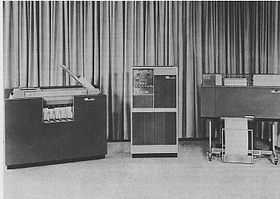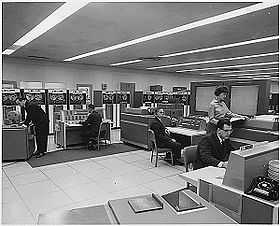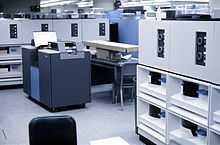Punched card input/output







.jpg)
A punched card reader or just card reader is a computer input device used to read executable computer programs, source code, and data from punched cards. A card punch is an output device that punches holes in cards under computer control. Sometimes card readers were combined with card punches and, later, other devices to form multifunction machines.
Most early computers, such as the ENIAC, and the IBM NORC, provided for punched card input/output.[1] Card readers and punches, either connected to computers or in off-line card to/from magnetic tape configurations, were ubiquitous through the mid-1970s.
Punched cards had been in use since the 1890s; their technology was mature and reliable. Card readers and punches developed for punched card machines were readily adaptable for computer use.[2] Businesses were familiar with storing data on punched cards, and keypunch machines and their operators were widely employed. Punched cards were a better fit than other 1950s technologies, such as paper tape, for many computer applications as individual cards could easily be updated without having to reproduce entire files.
Card readers/punches
CDC
- CDC 405 — CDC 6000 series card reader
- CDC 415 — CDC 6000 series card punch
Documation
Documation Inc., of Melbourne, Florida, made card readers for minicomputers in the 1970s:
- M-1000-L card reader 1000 cards/minute[5]
IBM
References
- ↑ Stern, Nancy (1981). From ENIAC to UNIVAC: An Appraisal of the Eckert-Mauchly Computers. Digital Press. p. 50. ISBN 0-932376-14-2.
- ↑ The IBM 711 Punched Card Reader's card-feeding mechanism was similar to the IBM 402's card-feeding mechanism
- ↑ Documation M-200 Card Reader Manual, 1972
- ↑ Documation M-200 photo
- ↑ Documation M1000L Card Reader
See also
- Plugboard discusses how early card readers worked in some detail.
| Wikimedia Commons has media related to Punch card readers. |